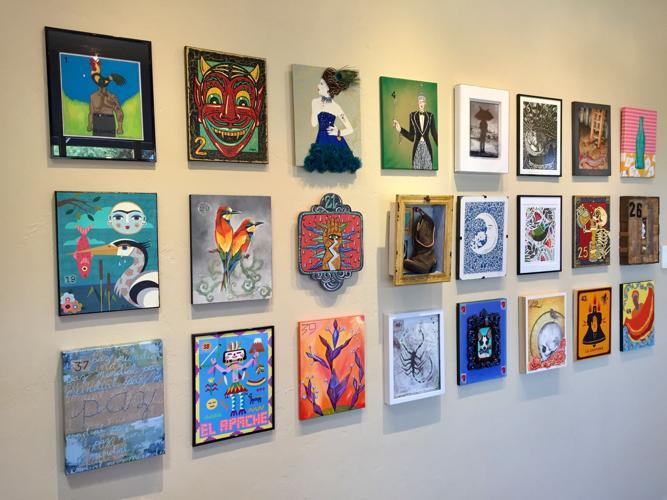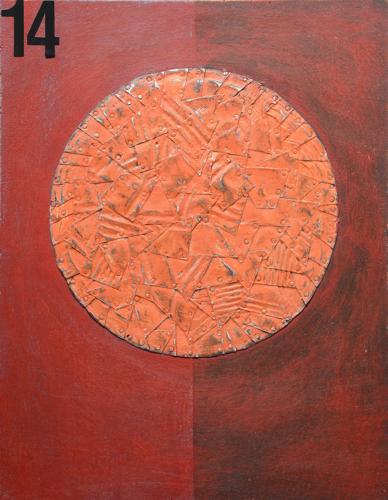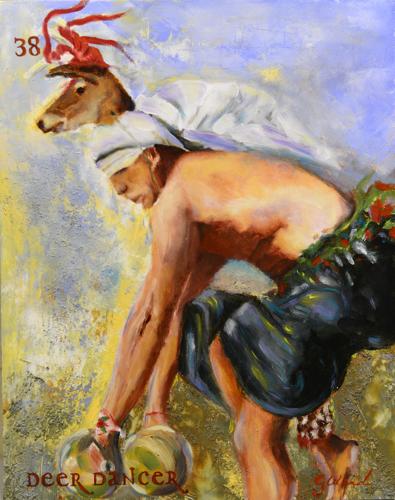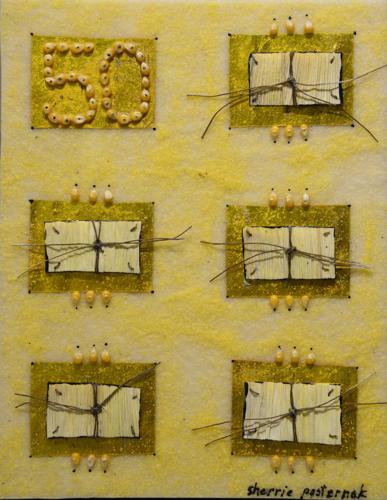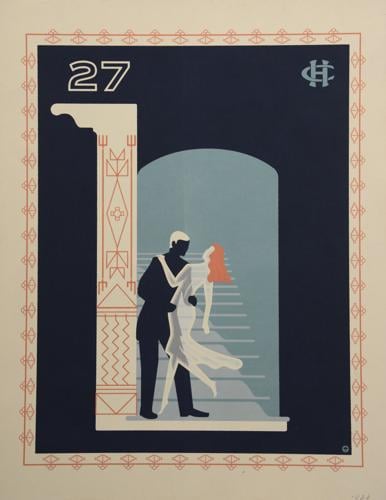Lotería images have long been reinterpreted.
But we’re willing to bet you haven’t seen any like the ones for the traditional card game in the upcoming Lotería de Tucson exhibit at Galeria Senita opening Friday, Oct. 5:
- No. 5, traditionally an umbrella, is a monsoon.
- No. 30, normally the shrimp, is a javelina.
- No. 43, originally a bell, is Ben’s Bells.
James Goodreau, co-founder of the gallery, came up with 54 (the number of cards in a Lotería deck) iconic Tucson people, places and foods and assigned each card to an artist. The artists had free rein with interpretations.
Alvaro Enciso, a Colombian-born migrant who moved to Tucson in the 1960s, was assigned card No. 14, Death. His image was the Sonoran Desert, but rather than a saguaro, he created a red dot, symbolizing a spot where a crosser dies trying to enter the United States.
“My art is about being a migrant and the search for the elusive American dream,” Enciso said. “When I got the assignment, I thought it was a good opportunity for me to tell a secret this desert has.”
That secret is the number of lives that have been lost in the Sonoran Desert. According to Tucson Samaritans, the Pima County Forensic Science Center reported more than 2,800 deaths since 2001.
Tin cans left behind by crossers became Enciso’s medium. “I wanted to use the materials of those cans because those cans have a story to tell about the suffering, deception and broken dreams that happen in the Sonoran Desert,” he said.
Ryan Trayte’s number was 27, traditionally the heart, but in this case, Hotel Congress. Like Enciso, he wanted to capitalize on the lesser-known elements of the location. “I wanted to do something that was not at all referencing the same thing that many other representations of Hotel Congress use.”
His art deco-inspired digital print of a man falling in love with a ghost incorporates patterns in the hotel’s lobby and references the hotel’s haunted reputation.
After the exhibition, Lotería decks incorporating the images in the show will be created and available for purchase. Proceeds will go to the Community Food Bank of Southern Arizona.
That donation aspect of the exhibit spoke to Trayte.
“ Artists are unique in the respect that we benefit so much from the people and the places that we are a part of,” he said. So it’s continually important for artists to give back to that community, too.”


